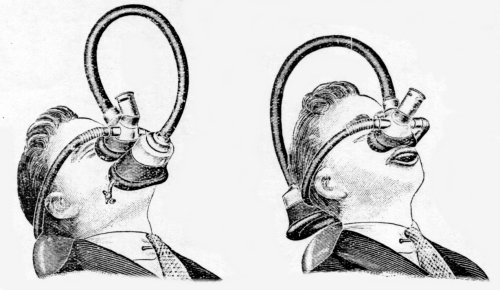Nitrous Oxide

NITROUS OXIDE: N2O

NITROUS OXIDE: N2O
Nitrous oxide is only weakly anaesthetic compared to chloroform and ether. A 50/50 mixture of oxygen and nitrous oxide is used to induce analgesia without loss of consciousness.
Nitrous oxide was first synthesised by Joseph Priestley in 1775. Its potential as a surgical anaesthetic avant la lettre was glimpsed by Samuel Latham Mitchill; and later by Humpry Davy before his attention wandered elsewhere. In the modern era, controlled self-administration of nitrous oxide using a demand-valve is common in a hospital setting. Nitrous oxide is used in contemporary obstetrics, for changing painful dressings, as an adjunct post-operative physiotherapy, and in emergency ambulances.
After the abortive demonstration of nitrous oxide anaesthesia in Massachusetts by Horace Wells, Professor Charles Jackson advised William Morton to use ether instead. In the 180s, Gardner Quincy Colton later helped revive the use of nitrous oxide in dentistry.
- Molecular weight: 44.02
- Solubility in water - 1 litre of gas in 1.5 litre of water at 20°C and 2 atm.
- Boiling point: -88.46°C (at atmospheric pressure)
- Melting point: -90.81°C (at atmospheric pressure)
- Density as a gas: 1.997 mg/cm3 at 0°C at atmospheric pressure
- Vapour pressure: 4.93 pascals (at 20°C)
- Relative molecular mass: 44.02
- Viscosity: 1488.99 poise (at 27°C)
- Specific gravity: 1.529 at 0°C, at atmospheric pressure.